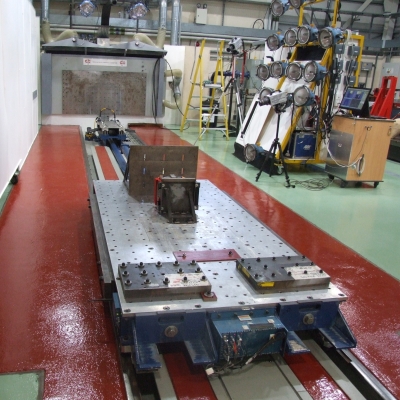- Zhou Guanyu – who was involved in a high-speed crash at yesterday’s Silverstone race – managed to escape serious injury.
- The 23-year-old driver was quick to pay tribute to the halo head protection device, now mandatory in F1 racing.
F1 driver Zhou Guanyu survived a deadly high-speed smash in yesterday’s British Grand Prix race.
The Chinese driver later told supporters that the Halo device – tested extensively at Cranfield University - had saved his life.
The incident occurred on the opening lap with several cars involved, and resulted in Zhou’s Alfa Romeo flipping the track barriers before coming to rest next to a fence.
The importance of the life-saving Halo device echoed the 2020 incident with F1’s Romain Grosjean, who escaped from a fireball crash at the Bahrain Grand Prix.
In both cases, a significant factor in protecting the drivers was the halo head protection device, tested extensively at Cranfield Impact Centre during its development by the FIA (Federation Internationale de l’Automobile) prior to its adoption. The issue of head protection in motorsport has been investigated in a number of MSc projects at Cranfield over the years.
Dr James Watson, Manager of the Cranfield Impact Centre – one of just two FIA-approved test centres in the world, used for crash-testing Formula One cars – said: “The halo device, along with other safety features on the latest F1 vehicles, has made a tremendous difference in protecting drivers in accidents. In the event of an accident, it is imperative to preserve the survival space around the driver and the halo device forms part of that critical zone.
“Prior to the introduction of the halo in 2018, we conducted compression tests on the device from various scenarios to establish its suitability. Static tests on the halo were taken to a load level that would be the approximate equivalent mass of five large typical SUV vehicles resting on the device. As with all safety devices in F1 vehicles, the halo is designed to reduce the risk of injury in as many accident types as possible.”
Cranfield University has undertaken research, consultancy and testing for the motorsport sector since the 1970s. Cranfield's Advanced Motorsport Engineering MSc (previously Motorsport Engineering and Management) has been running since 2000-2001, making it the longest running master’s programme covering motorsport engineering which is currently triple accredited by the Institution of Mechanical Engineers, Royal Aeronautical Society and Institution of Engineering and Technology.
Professor James Brighton, Head of the Advanced Vehicle Engineering Centre and Professor of Automotive Engineering, said: “Safety has been at the heart of our performance vehicle engineering for the last 50 years. When things go wrong at these high speeds, the consequences would be severe in the absence of the engineered solutions we have today. Many of our modern test standards began development decades ago in our Automobile Engineering department, now the Advanced Vehicle Engineering Centre.”
Cranfield’s Advanced Vehicle Engineering Centre focuses on the development, application and evaluation of advanced vehicle technologies to help make vehicles more capable, lighter, greener and more efficient.
Cranfield introduced the first master’s course covering mechatronics and motorsport – the Advanced Motorsport Mechatronics MSc – in the world in 2018.

